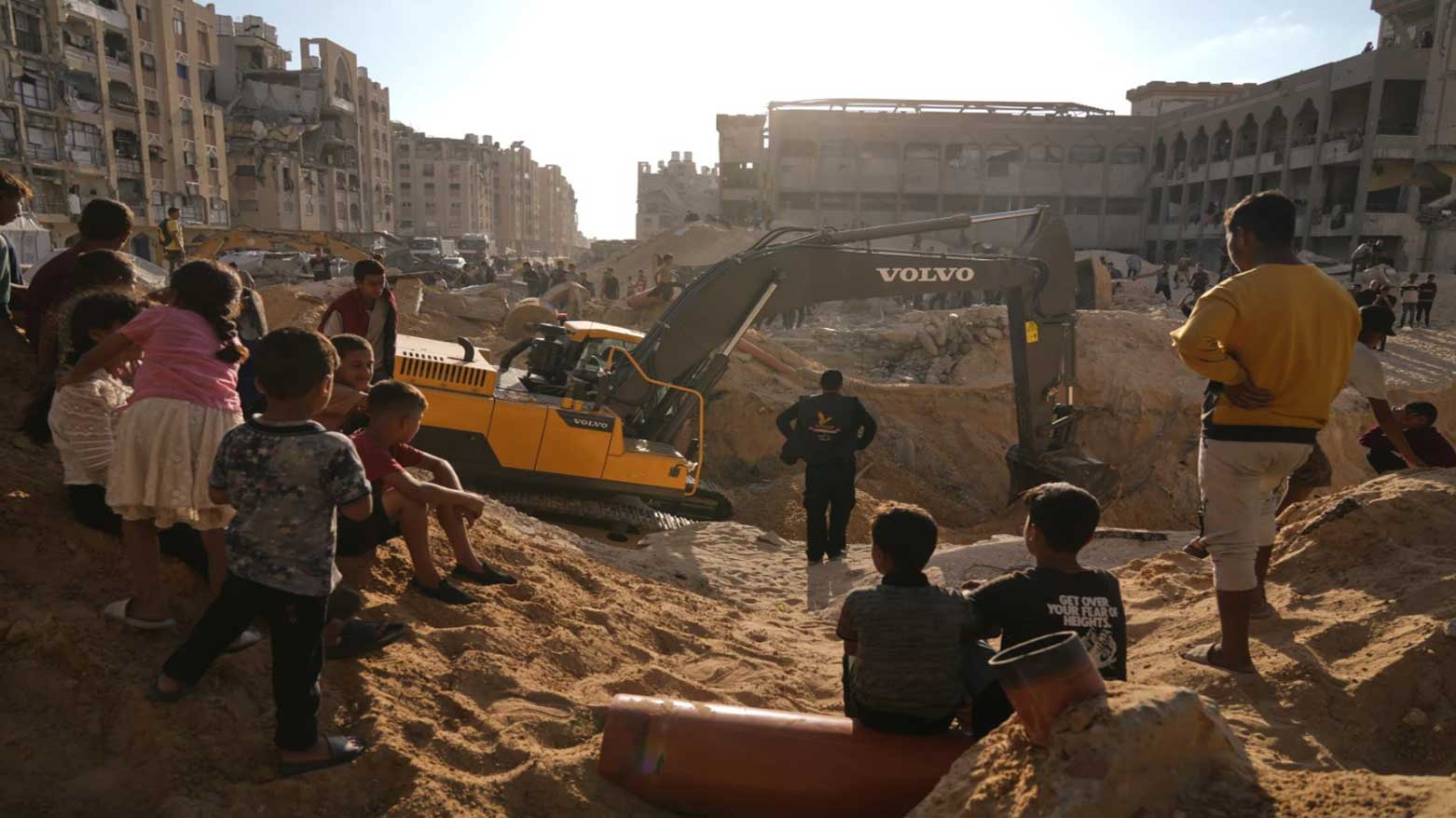Hamas Expands Search for Hostage Remains Amid Fragile Gaza Ceasefire
Trump’s 48-hour deadline for Hamas to return more bodies nears its end as Egypt aids recovery efforts

ERBIL (Kurdistan24) — Hamas has intensified its search for the bodies of Israeli hostages across the Gaza Strip, the group announced Sunday, a day after Egypt dispatched a team of experts and heavy machinery to assist in the grim recovery effort.
Under the U.S.-brokered ceasefire that began on October 10, Hamas is required to return the remains of all Israeli hostages as swiftly as possible, while Israel has agreed to hand over 15 Palestinian bodies for each one.
So far, Hamas has returned 15 bodies, but none in the past five days. In return, Israel has released the bodies of 195 Palestinians, many still unidentified.
In southern Gaza’s Khan Younis, children and families looked on as Egyptian excavators clawed through the sand near bombed-out buildings.
Egyptian officials, speaking anonymously, confirmed that their team entered Gaza Saturday as part of broader mediation efforts to sustain the ceasefire and locate the remaining 13 hostages.
U.S. President Donald Trump earlier said he was “watching very closely” to ensure Hamas delivers on its commitments within the next 48 hours. However, Trump’s 48-hour deadline is now nearing its end, while there is no news from Hamas bout returning any of the remaining bodies.
“Some of the bodies are hard to reach, but others they can return now, and, for some reason, they are not,” he posted on social media Saturday.
Hamas insists that widespread destruction across Gaza has complicated its search operations.
Tensions flared late Saturday when Israeli forces struck Gaza’s central Nuseirat refugee camp, prompting Hamas to accuse Israel of breaching the ceasefire. Al-Awda Hospital reported receiving multiple casualties from the strike.
Prime Minister Benjamin Netanyahu defended the operation, saying Israel had targeted Islamic Jihad militants preparing to attack troops.
Islamic Jihad denied the claim, while Hamas described the assault as a “clear violation” of the truce and an attempt to undermine U.S. mediation.
“Of course, we also thwart dangers as they are being formed,” Netanyahu said Sunday, emphasizing that Israel would act independently to protect its security despite criticism that Washington was dictating its actions.
The renewed violence came just hours after U.S. Secretary of State Marco Rubio concluded his visit to Israel. Rubio inspected a new multinational coordination center established to manage the ceasefire and reconstruction planning for Gaza.
About 200 U.S. troops are working alongside Israeli and international counterparts to share intelligence and prevent further escalation.
Rubio said the coordination allowed allies to identify potential attacks before they occurred, stressing that no U.S. forces would be deployed inside Gaza.
Over two years since Hamas’s unprecedented October 7, 2023 assault on Israel — in which militants killed around 1,200 people, mostly civilians, and abducted more than 250 others — the conflict has reshaped the region’s security landscape.
Israel says its military campaign has been a necessary response to eliminate Hamas’ militant infrastructure and ensure such atrocities never happen again.
Israeli officials have repeatedly accused Hamas of inflating casualty figures and using civilians as human shields by embedding fighters, weapons, and command centers within residential neighborhoods, schools, and hospitals. Western diplomats and security experts say the group’s strategy has prolonged the suffering of Gaza’s population and obstructed international aid deliveries.
As Israel works with U.S. and regional allies to maintain the ceasefire and prevent Hamas’ resurgence, discussions are intensifying over the territory’s future governance and reconstruction — a process observers believe depends on Hamas’s complete disarmament and the emergence of a new, non-militant local authority.
The next steps in the ceasefire — including Hamas’ disarmament and establishing Gaza’s postwar governance — remain among the most complex and contested issues facing mediators.